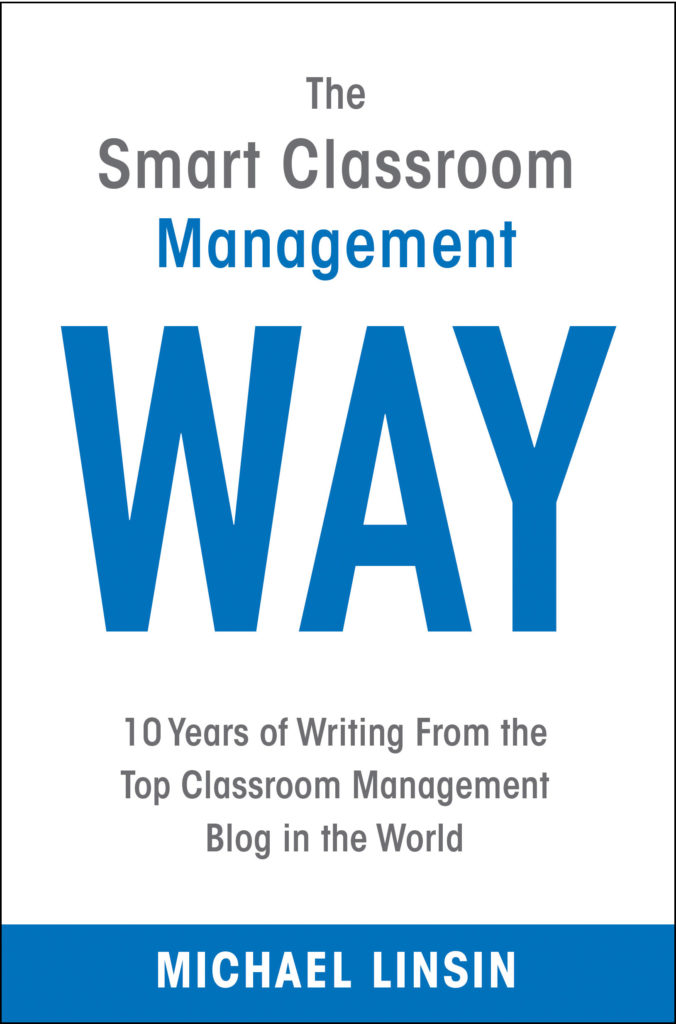By Michael Linsin
The purpose of a classroom management plan is to hold students accountable for misbehavior — without having to yell, scold or lecture.

When used correctly, a classroom management plan eliminates the need to use these and other stressful, counterproductive methods.
It allows you to demand impeccable behavior without causing friction and resentment — which then frees you to build meaningful and influential relationships with your students.
To set up a plan, you must first devise a set of rules that cover every conceivable misbehavior or disruption that could crop up in your classroom.
I recommend the following four rules:
- Listen and follow directions.
- Raise your hand before speaking or leaving your seat.
- Keep your hands and feet to yourself.
- Respect your classmates and your teacher.
Note: For high school classroom management, search my blog at smartclassroommanagement.com.
These rules work because they make sense to students, they’re fully enforceable, and they cover all the bases. Also, because of their refreshing lack of ambiguity, they discourage arguing, complaining and finger pointing.
Next, you’ll need a set of consequences to give your rules the muscle they need to effectively manage and control your classroom — because without consequences, rules are merely suggestions, destined to fall on deaf ears.
The best consequences are those that don’t interrupt the flow of your classroom, that are quick and easy to carry out, and that strongly dissuade students from misbehaving.
I recommend the following three consequences:
- First: warning.
- Second: time-out.
- Third: letter home.
Note: When a student reaches the third consequence, they will also return to time-out. For every subsequent time they misbehave, they will cycle back to time-out.
Print both your rules and consequences on a large poster board and display them prominently in your classroom. You will refer to your classroom management plan often, and thus your students need to be able to see them wherever they’re seated.
Set aside a desk or two for the sole purpose of time-out. The desk doesn’t have to be stuck in a corner or far away from the rest of the class. It just must be separated to some degree.
It is the symbolic separation from the rest of the class, and the feelings it evokes, that makes time-out effective. It’s not a separation of humiliation or gloomy punishment. It’s one of reflection, of personal disappointment, and of hope in returning quickly to the class they like being part of.
Create a simple form letter to send home to parents when students reach the third and final consequence. Keep it short and to the point. Refrain from giving your opinion or adding an angry note at the bottom. Just give the facts.
The consequences are in play throughout one single day. When the students arrive for school the next day, lessons have been learned, no grudges are held, and everyone starts fresh — with another chance to succeed, to grow, to be better than the day before.

To make your classroom management plan effective, it must be followed faithfully and carried out in a certain way. This is key, because there is no magic in the plan itself. It’s just a set of guidelines scrawled on a piece of paper.
How you use it is what gives the plan its power.
My blog details everything you need to know to follow through with your classroom management plan, from how to give a warning to how to send a letter home to parents. I also recommend reading posts in the Rules & Consequences and Time-Out categories of the archive. Together, they explain how to carry out your plan in a way that motivates all students to follow your rules.
Using this simple plan, you’ll never again have to rely on complicated, frustrating and demoralizing methods and strategies so many teachers find themselves roped into.
Just follow the plan. Build relationships with your students. And love your job.
San Diego Education Association member Michael Linsin is founder of the Smart Classroom Management blog (smartclassroommanagement.com) and author of five books, including The Smart Classroom Management Way (2019). With teaching credentials in multiple subjects, he has taught every K-12 grade level for the past 29 years. He also holds an advanced degree in educational counseling.
Back to School 2019: Related content
The links below offer a mix of tips and trends that may guide your journey this year.

What’s new in EdTech
Best EdTech practices
Genius classroom hacks
Tips for Back-to-School Night
Organize your space
A cool classroom makeover
Sage advice from California Teachers of the Year Rosie Reid, Kim Holz, and Angel Mejico
5 things students need to hear you say
Self-care: 7 healthy habits
The Discussion 0 comments Post a Comment